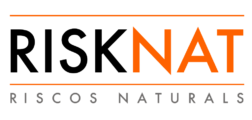RISKNAT has specialists and users of the following methods and techniques: mapping (geologic, geomorphologic, hazard), GIS, LIDAR (ground and airborne), photogrammetry, geodesy (GNSS-RTK), seismology, numerical dating, soil physic properties and biogeochemistry, offshore acoustic mapping, seismic reflection profiling, magnetotelluric sounding (MT), controlled source electromagnetics (CSEM), sediment mechanical characterization and Radon measurements. The group highly benefits from the interaction among the different lines of research through the common methodologies and techniques.
We implemented several methodologies which have later been adopted by the community. For example, we pioneered the CuaTeNeo GPS network in the eastern Betics in the early 90’s, which are now providing sufficiently long time series to obtain reliable measurements. This network has been enhanced since then by other colleagues to its present form, which includes permanent stations providing a reliable monitorization of the area. We have also adapted techniques to specific processes (for example the use of LiDAR and photogrammetry in 4D analyses of rockfall monitoring with detection of precursory indicators for rock falls, or the implementation of machine learning to obtain an automatic identification of rockfalls). Some of these methodologies can be used in the analysis of different types of processes (for example we use geodetics mainly for active tectonics but also for mass movement and flood studies).
